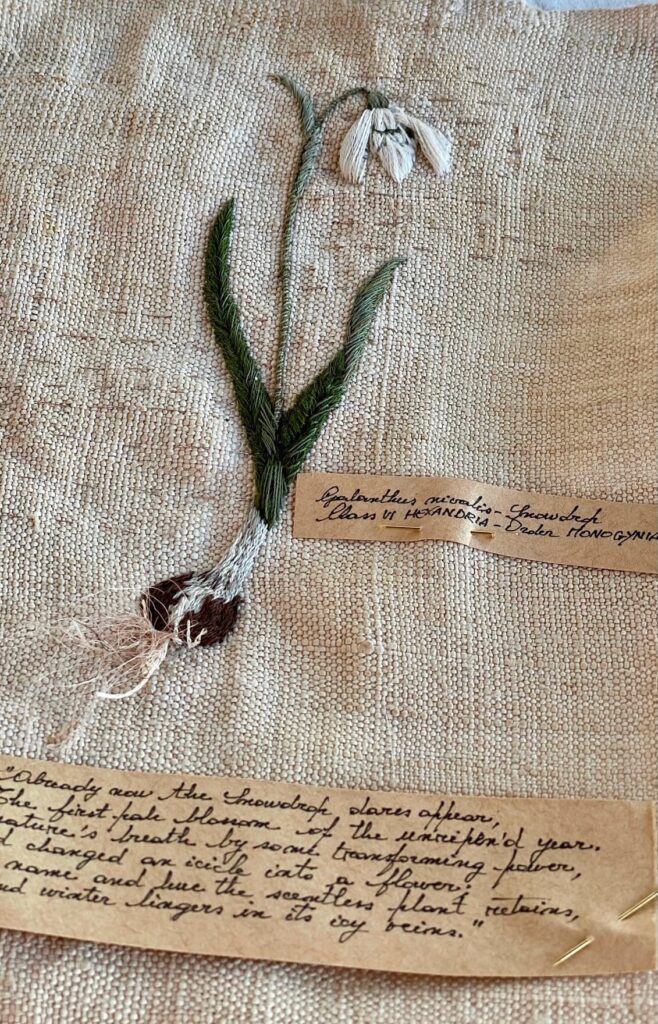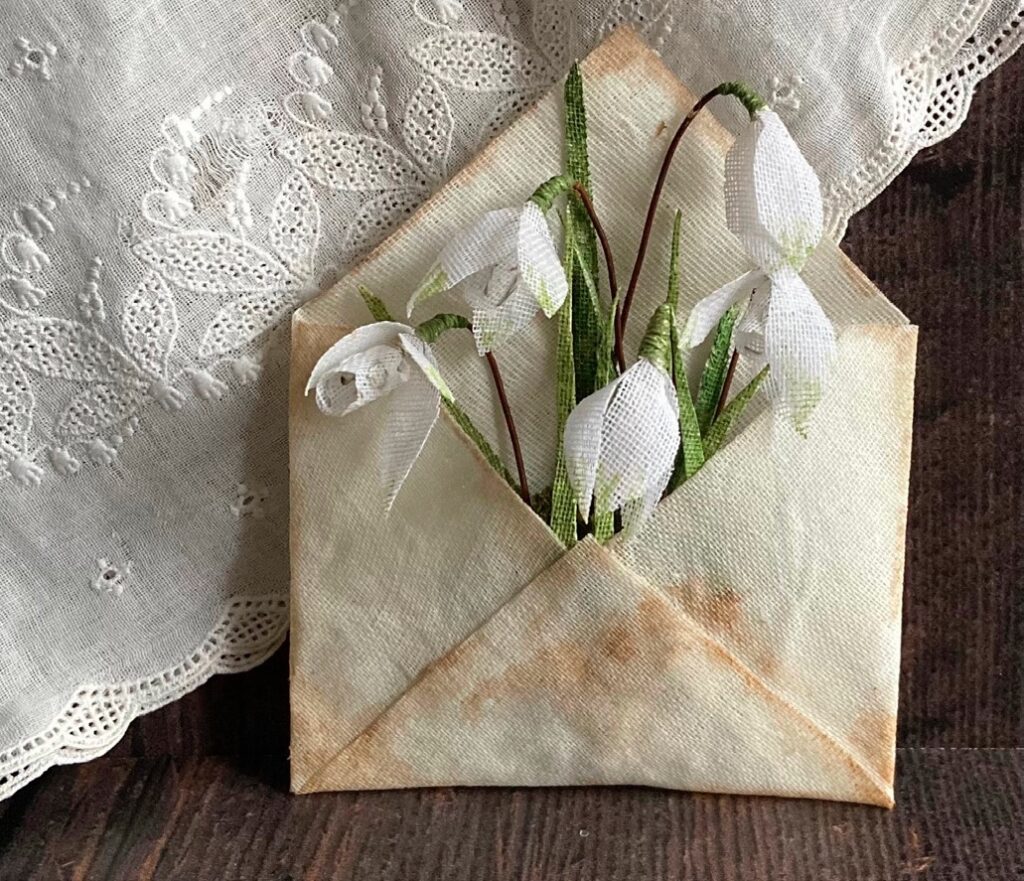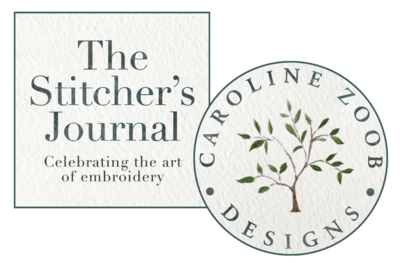The snowdrop
‘The first pale blossom of th’unripened year…’

The Snowdrop
‘Many, many welcomes,
February fair maid
Ever as if old time,
Solitary firstling
Coming in the cold time…’
— Alfred Lord Tennyson
Candlemas flowers, flowers of hope, snow flowers…whether they arrive in a tny clump in the grass or a carpet across a woodland floor, they are always an inspiring sight just as we think we can bear no more of winter.
They inspire many different forms of creativity, from the exquisite botanical embroidery of Cristina Rebeccani Coretti, whose work has been displayed in the Library of St Mark’s, in Venice, to the dear envelopes of hand-made flowers made by Debra Thompson.

The snowdrop is a good flower with which to practise Satin and Padded Satin stitch, which suits the lovely shapes of the petals. Even if you are not aiming for the look of a botanical embroidery, it is always a good idea, whatever the flower you are embroidering, to examine the real thing in detail. There is of course masses of information online, but I love the vintage wildflower and botany books, especially the series ‘As shown to the children’, which makes things very clear and simple.
With the snowdrop, the key feature is getting that little nib at the tip of the tepals (these are the outer, white parts of the flower – called tepals in plants where the petals and sepals are effectively indistinguishable, such as in lilies) while keeping their lovely shape: more rounded if the tepals have opened, in which case the little green markings on the inner whorl will show, or are still closed, in which case the green markings are not visible. If one was collecting specimens for an herbarium, you would try to capture them in each stage of opening. When the bud is tight, it is quite slender with a slightly wrinkly appearance. As it nears the point of opening, it plumps up (these are the best fun to stitch). I think they are at their most lovely when the tepals have just separated and are still pointing down at quite a sharp angle, then as the flower ages, they lift away from the inner whorl until they are almost at right angles to the inner whorl. Each snowdrop has two leaves which are long and are not to be confused with the little hood of green from which each flower breaks free. There are no short leaves coming off the stems. If you are stitching a clump or run of snowdrops, it is a nice idea to include them at all stages so they look more natural. There are many different varieties and the snowdrop hunters can give trainspotters a run for the money in wanting to observe and record the many varieties.
A gallery of snowdrops
Hover over the images to see captions and click on the images for a larger view.
